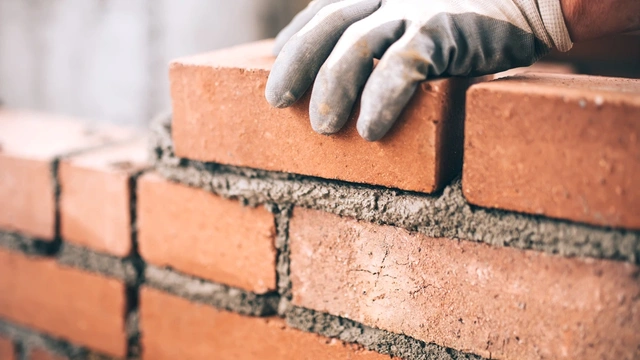Lots of people dream of building their own home. If you're thinking about making that dream come true, you might wonder if you can get a mortgage to help with the costs.
Good news - you can, with a self-build mortgage.
What is a self-build mortgage?
A self-build mortgage is a loan for people who want to build their own house instead of buying an existing one.
Whether you're picturing a grand estate or a quirky, unique home, a self-build mortgage can help you make it happen.
How does a self-build mortgage work?
In many ways, a self-build mortgage is quite different a standard repayment mortgage.
With a standard mortgage, you borrow a lump sum when a house sale is completed on an existing property. But with a self-build mortgage, the money is released in stages as the build progresses. This reduces the risk to the lender and helps you manage the money efficiently, so that you don’t run out of cash before the project is complete.
When you receive the funds can vary from one lender to the next. Generally, you’d get a cash injection at key points, for example when the:
- land has been purchased
- foundations have been put down
- construction has reached eaves height
- roof is watertight
- interior layout has been set up during the first fix
- finishing touches (like skirting boards) have been made during the second fix
- build is complete
Most lenders prefer to give you the money after each stage has been finished. But there are some lenders that will hand over an instalment before you begin the work on that stage. This can be a big help if you haven’t got the upfront savings to cover the costs.
If you’re unsure about any part of the process, it’s best to get in touch with your mortgage provider who will be able to help.
What are the advantages of a self-build?
Creative control
A self-build mortgage allows you to construct your own property from scratch. So, you’re in full control of how your home looks and feels, inside and out. This gives you the scope to create something truly unique.
Cut the cost of labour and materials
If you’ve got the skills, you could save a lot of money by building your own property, or by doing some of the work yourself (like plastering or painting). You could also cut costs by asking for a few different quotes for labour, and shopping around for materials.
Whoever does the work, make sure you have the correct planning permission and building regulation approvals.
Pay less stamp duty
You don't have to pay stamp duty on a self-build property. Stamp duty only applies if the land you buy costs more than £125,000.
Potential profit
In many cases, the value of self-build properties will be more than the cost of the construction and the land. So, if you plan on selling in the future, you may be able to make a decent profit (depending on the market at the time).
What are the disadvantages?
Building your own home can be an exciting project, but it does come with some challenges:
Time-consuming and complex process
When you’re considering a self-build, you’ll have to make sure you are fully committed to the project. It will be a much lengthier process than taking out a standard mortgage for a home that’s ready to move into.
There will be a lot more paperwork involved. Managing the construction process and navigating building regulations and planning permission can be complicated and stressful.
Costs can overrun
Alongside hiring contractors, you’ll have to budget for materials, the land itself, an architect to help design the property, and temporary accommodation while the build is taking place. Often it can be difficult to judge just how much the project will end up costing. And unexpected costs could crop up, leading to you going over budget.
Self-build mortgages can be harder to get
Securing a self-build mortgage can be more difficult, and not all lenders offer them. To balance out the risk to the lender, these mortgages usually come with higher interest rates compared to traditional mortgages. You may need to put down a deposit of at least 25% to 50%, so it pays to shop around for a deal.
Before you can take out a self-build mortgage, your lender will likely want to see supporting documentation, including (but not limited to) plans of your build and a breakdown of the costs involved.
Once your home is completed you may be able to remortgage to a standard mortgage product with a better rate. Bear in mind that early repayment charges may apply if you switch before your current deal ends.
How to get a self-build mortgage
Getting a self-build mortgage involves several steps:
- Plan your project: Create a detailed plan for your build, including costs, timelines, and materials.
- Find a lender: Look for specialist lenders that offer self-build mortgages. Not all lenders do, so you might need to shop around.
- Check your eligibility: See if you’re likely to be accepted and how much you could borrow, before you apply.
- Secure a plot: Purchase the land where you plan to build (if you don’t already own it).
- Submit your application: Once you have your plot and detailed plans, submit your mortgage application and provide documentation.
Please note that Ocean Finance does not currently arrange self-build mortgages.
Adele is a personal finance writer with more than 10 years in the finance industry behind her. She writes clear and engaging guides on all things loans for Ocean, as well as contributing blogs to help people understand their options when it comes to money.
![Email icon]()
Become a money maestro!
Sign up for tips on how to improve your credit score, offers and deals to help you save money, exclusive competitions and exciting products!
Find this useful? Share it with others!









